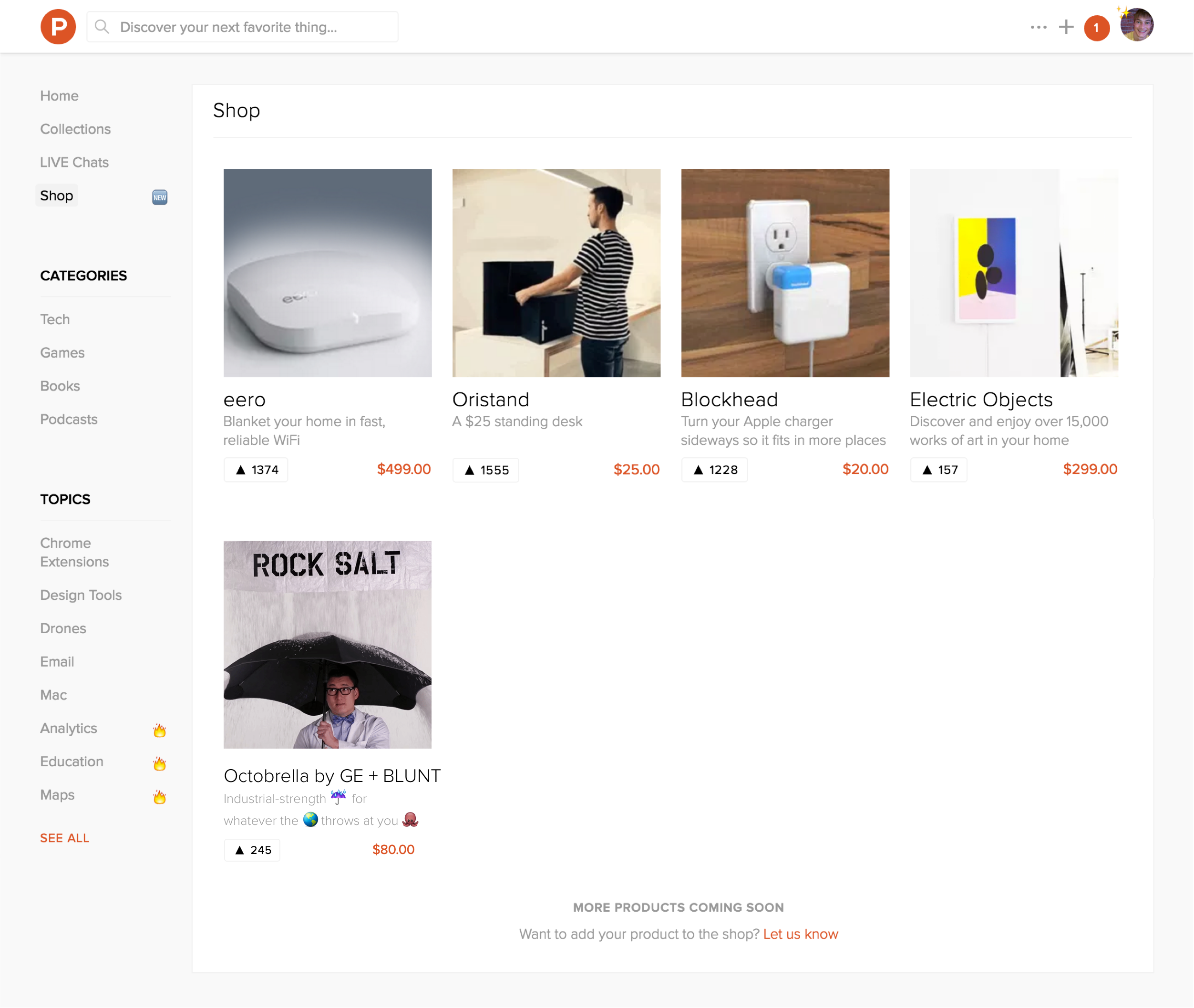Product Hunt has begun rolling out a feature that allows you to shop right on the community site. Select products will now feature a buy button that creates another opportunity for product makers to sell their goods. This process is powered by Stripe and starts with five initial products — Eero, Electric Objects, Oristand, Blockhead, and “Octobrellas” from Blunt — thanks to a partnership with GE.
In a recent poll of its community, the company discovered that “nearly 50 percent” of respondents said they’d bought something found on Product Hunt. It’s this result that has helped establish a buy button. CEO Ryan Hoover explained that when you visit a product page with a buy button, tapping on it will direct you to enter your shipping information, choose a credit card on file or enter a new one, and make the purchase.
The goal of this effort is to “reduce friction over time to purchase,” Hoover explained. Although Product Hunt will receive an undisclosed percentage of each purchase — making this the first significant revenue-generating service the company offers — it won’t go out of its way to hide any purchase links on a hunted product.
Limiting the launch to five products was intentional, because it’s a number that Hoover said is “logistically easier” and will allow the company to learn from the experience. The chosen items were selected because they’ve been previously featured on Product Hunt and received some traction. “When we reached out to those founders, most responded within the first 10 minutes and were eager to work with us,” Hoover remarked.
He also shared that the products were chosen based on the problem they solve, the price, and the reaction from the community, adding: “The primary goal was to get a diverse set of products.”
In the beginning, the company will be selective about which brands receive the green “buy now” button, as Product Hunt is interested in aligning itself with the right partners. Eventually it’ll start on-boarding more products as people reach out with more interest. There’s even a central marketplace that curates all of the selected items to make it easier for people to find them.
While there may be a lot of activity taking place on Product Hunt, the collected data could be an incredibly powerful tool in helping target products to users and in monitoring which products people purchase. I wondered if this could be used to fine-tune recommendations, among other things. Hoover didn’t disagree with this assessment, but said that the company doesn’t yet have an end-to-end funnel on what is being purchased. In the long-term, he believes the data could result in improved targeting, however, as it certainly provides a higher signal than data from people simply clicking the “more info” button on the site.
People are also drawn to highly upvoted products, which could motivate them to make a purchase. If you see hundreds of votes around a new app, that activity might indicate significant traction and convince you to investigate, and perhaps purchase it. This is where Product Hunt’s buy button could come in handy. Beyond the standard products featured on the site, the buy button could also be used for books, podcasts, and more.
For Hoover’s part, he wants to make buying something directly from Product Hunt painless. “We know that people are purchasing things [on Product Hunt] and want to make it easier and a better experience while helping makers sell more and directly reach customers they want to reach,” he said.
Product Hunt’s buy button will be supported on both the mobile and desktop Web, but not currently on its iOS and Android apps.
VentureBeat's mission is to be a digital town square for technical decision-makers to gain knowledge about transformative enterprise technology and transact. Learn More


